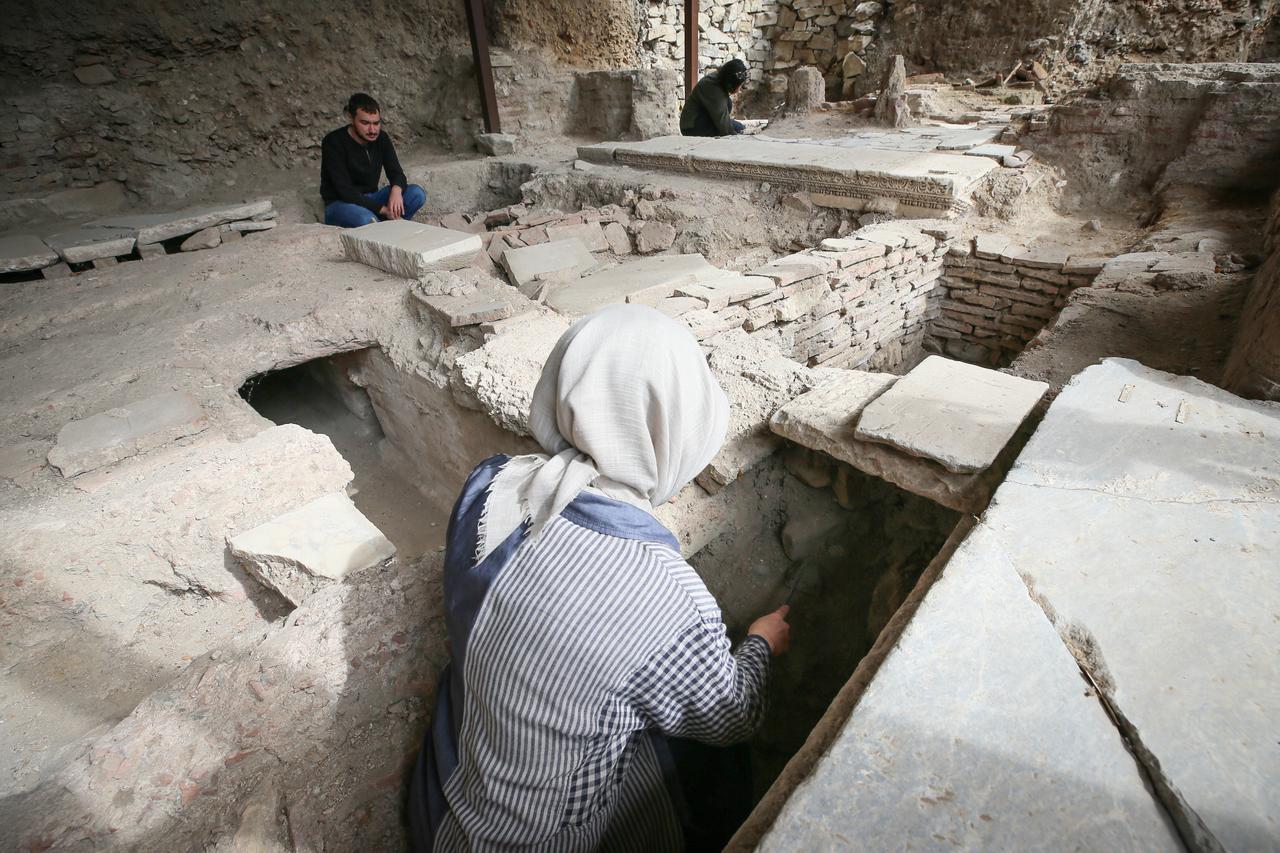
Archaeological work at the Iznik Tile Kilns in Bursa’s Iznik district has brought to light a small Byzantine chapel (a compact church) and the remains of an Ottoman bath, revealing how faith, water infrastructure, and ceramic production overlapped across centuries.
The long-running excavation—conducted under the auspices of the Presidency, with the permission of the Ministry of Culture and Tourism and the support of Istanbul University—has been underway for 41 years and continues to build on earlier discoveries of kilns and extensive tile and ceramic fragments.
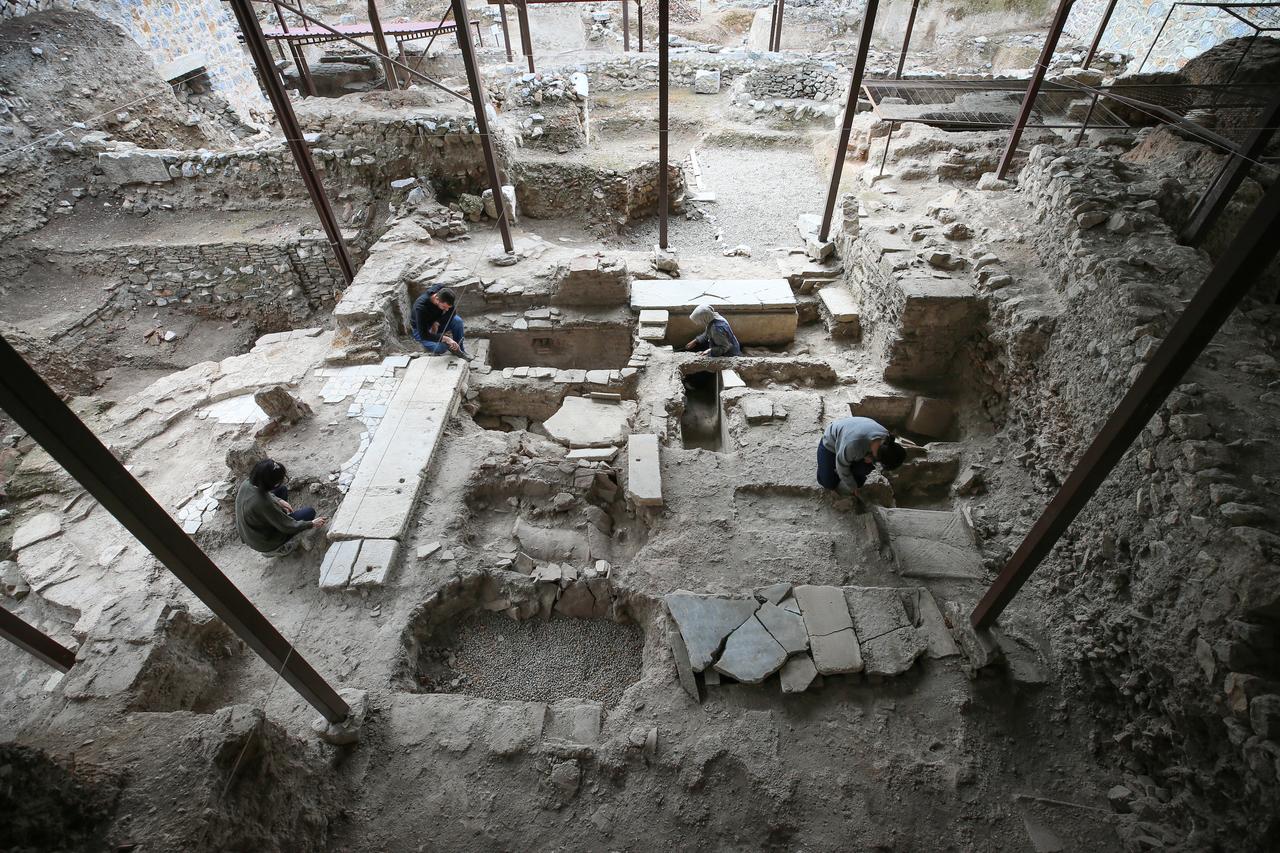
Excavation director Assoc. Prof. Belgin Demirsar Arli of Istanbul University’s Department of Art History said the team is working in a multi-layered zone whose earliest phase dates to the Roman period.
She noted that the area’s ancient water lines shaped how later structures rose on top, with a main church and a better-preserved chapel set above the Roman infrastructure and Ottoman workshop buildings added later.
The chapel measures 5.5 by 5.2 meters and preserves a narthex (an entrance hall opening into the main space), visible water channels, and an apsis (apse) where the floor keeps an opus sectile pattern—an inlay of small colored marble pieces.
Arli added that the chapel’s floor, in the Byzantine manner, was opened for burials and includes a stone-lidded tomb like a sarcophagus containing the remains of a man, a woman, and a child; the lid was broken in the Ottoman period.
Additional brick-covered graves also came to light.
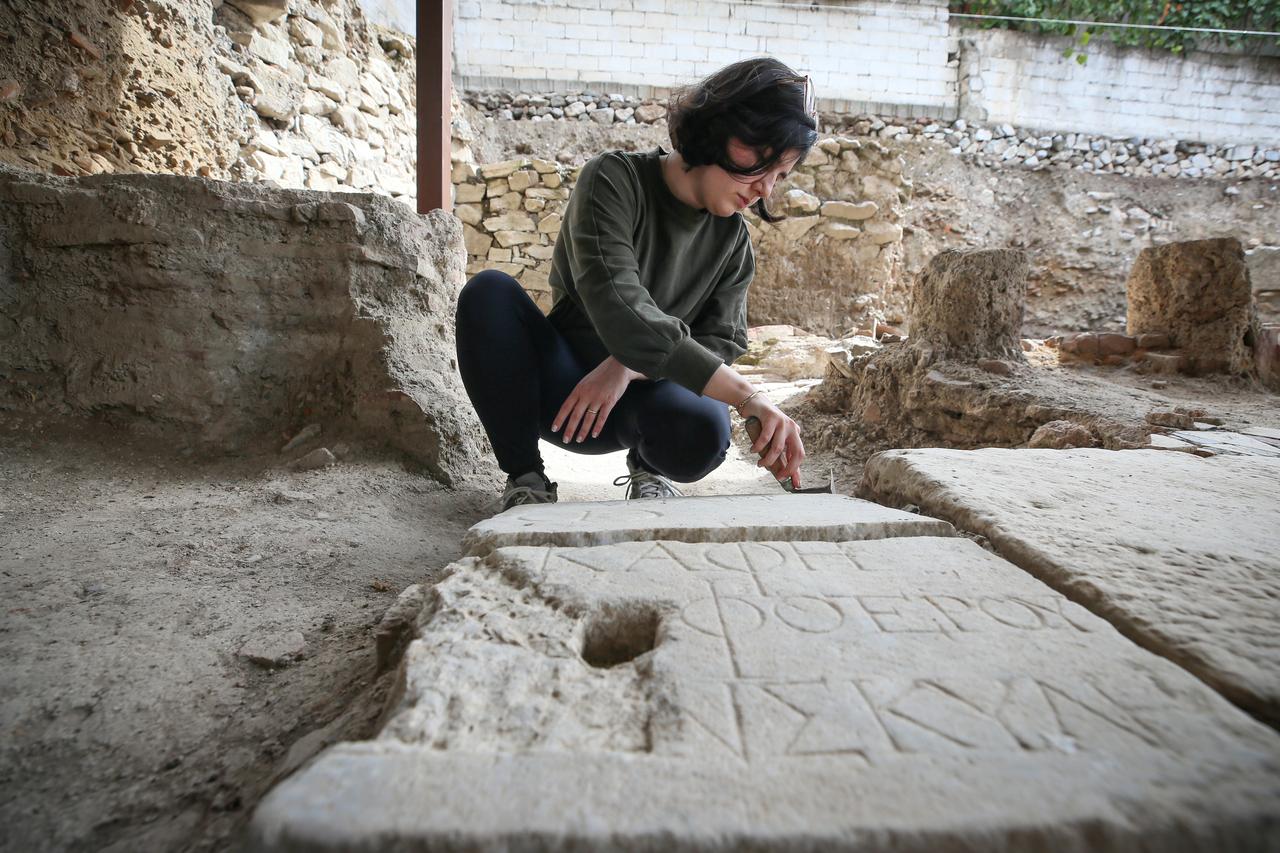
Arli said the team dates the chapel by comparison with nearby Iznik's Hagia Sophia and through matching floor details.
She stated that they interpret the building as part of the Keramon Monastery, known from sources since the ninth century, even though the structure itself is not described in publications.
Spolia—reused architectural elements—include inscribed pieces used between the bema (step) and the naos (nave), with the earliest examples dated to the second century.
According to Arli, the site has yielded Byzantine finds spanning from the 2nd century to the end of the 13th century, alongside Byzantine ceramics, glass, and metalwork, as well as sarcophagi and various graves.
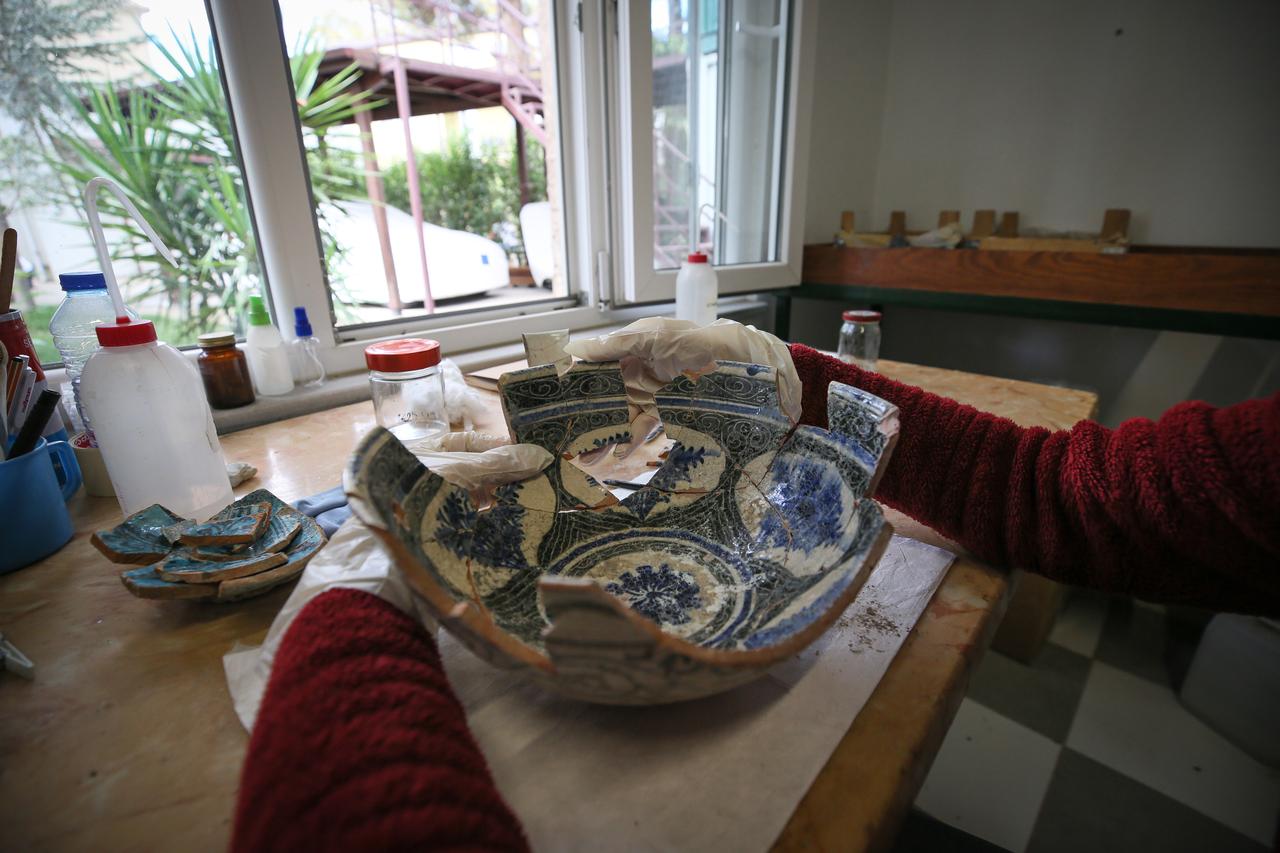
To the east of the chapel and in an upper layer, the team identified a small Ottoman bath, which likely served craftsmen working in the large tile-making workshops that define the district.
Although the structure extends beyond the present parcel limits, Arli said the exposed features are sufficient to confirm it as a bath and called it a significant architectural find tied to daily labor and hygiene in the atelier context.
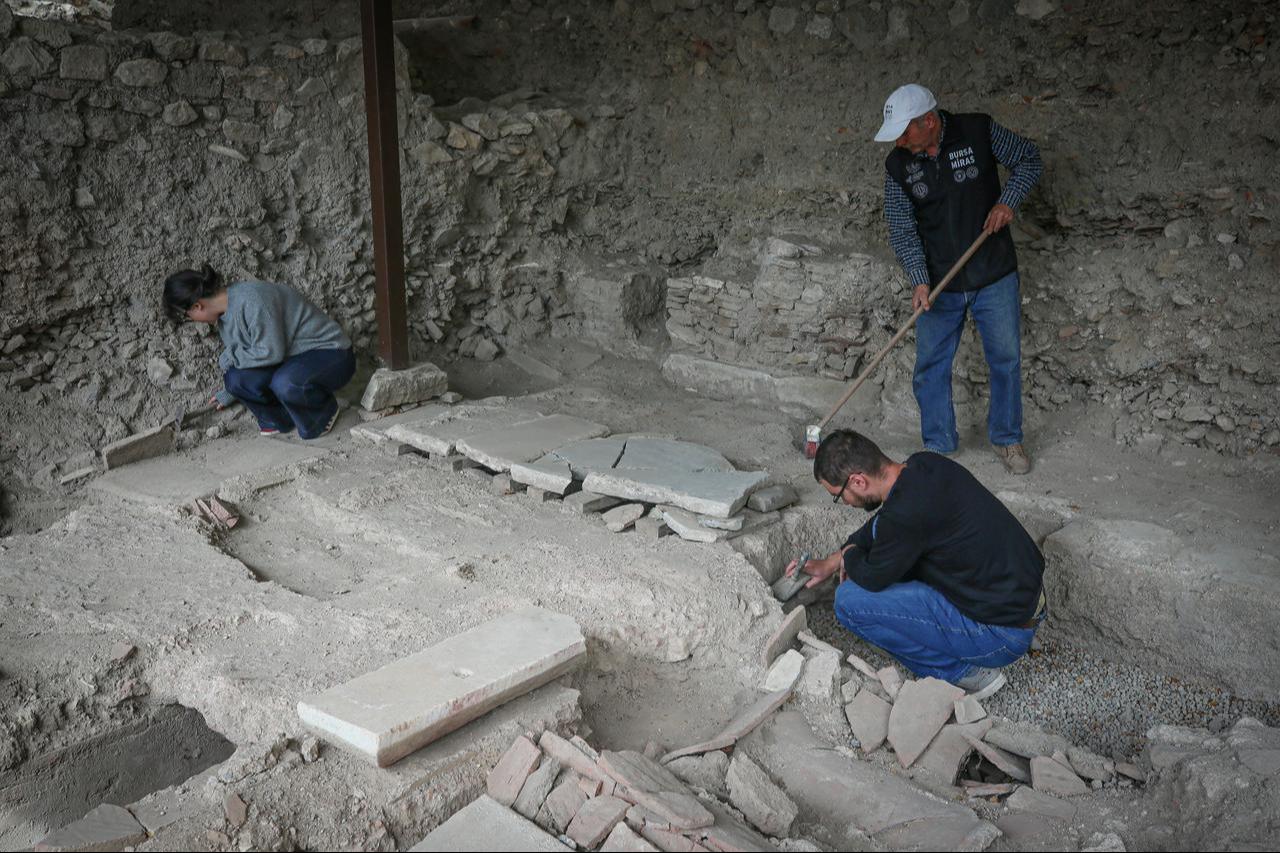
The excavation house continues to process the stream of material that proves Iznik’s role as a world-class center of tile and ceramic production. Finds are numbered, cleaned, measured, and documented with information slips, then handed over to the Iznik Museum for exhibition.
Arli recalled that work began in a very small area that later expanded through expropriations to 4,000 square meters, now containing an extensive Ottoman-period tile workshop zone and 11 kiln fireboxes.
She emphasized that the team has kept these installations stable with regular maintenance and temporary covers so they can pass them on in good condition.
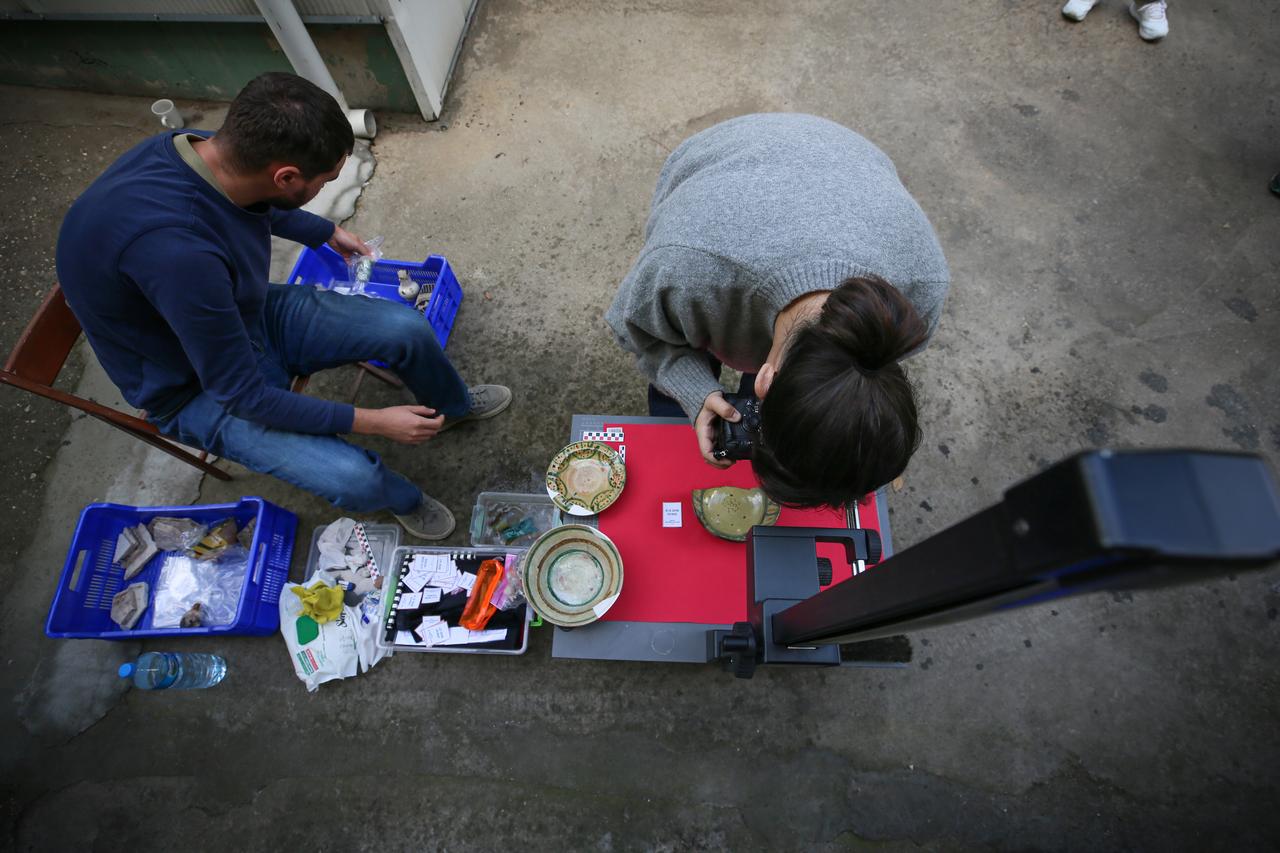
Arli said the excavation lies within the town center and is bordered by a road and several houses.
She outlined a plan for the coming years to complete the unexcavated parts, install a functional cover system, and bring the place to life with kiln sections or models.
“We plan to open it as an open-air museum,” she said, pointing to a future where visitors can walk through the industrial and sacred layers that shaped Iznik.